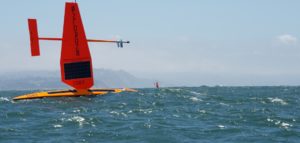
It’s not an Ark, but NOAA is charting a new course for aquatic research using autonomous drones.
The federal agency recently launched a sea-going sortie of three aquatic drones bound for the Bering Sea.
The drone fleet will survey the nation’s largest fish stock and monitor changing weather and ocean conditions in the Arctic.
The autonomous drones are part of NOAA’s Unmanned Systems Operations Program launched in March. The Alaskan mini-fleet forms part of a three-prong effort to deploy research drones summer in the Pacific, Arctic and Atlantic oceans to provide high-quality environmental data for resource management and weather forecasting.
“We are accelerating the use of unmanned systems during COVID-19 to meet critical mission needs at a time when some of our ship and aircraft missions have been postponed for safety reasons,” said Rear Adm. Tim Gallaudet (Ret.), assistant secretary of commerce for oceans and atmosphere and deputy NOAA administrator.
“The innovative systems will provide valuable information for communities at a time when it may be difficult to do so by other means.”
A NOAA release adds:
“In the Bering Sea, the autonomous wind and solar-powered surface vessels will conduct an emergency survey of walleye pollock, our nation’s largest and one of our most valuable domestic fisheries. The surface vessels are expected to provide some key information in time to be used by resource managers to establish fishing levels for the 2021 fishing year. Equipped with specially designed acoustic sensors, the unmanned vehicles will measure the abundance of pollock. They will also provide information on ocean conditions that affect the pollock population.”
NOAA received $12.7 million from Congress this year to improve and expand UxS operations across the agency, including the creation of the new program — a key goal of NOAA’s recently released Unmanned Systems Strategy.
Last year, a NOAA research paper in Bulletin of the American Meteorological Society outlined how disposable drones could be used to gather data from a hurricane’s lower eyewall – the most dangerous part.
Jason is a longstanding contributor to DroneLife with an avid interest in all things tech. He focuses on anti-drone technologies and the public safety sector; police, fire, and search and rescue.
Beginning his career as a journalist in 1996, Jason has since written and edited thousands of engaging news articles, blog posts, press releases and online content.
Email Jason
TWITTER:@JasonPReagan
Subscribe to DroneLife here.